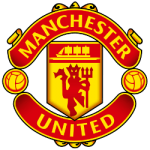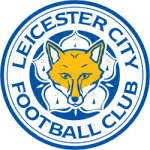The Premier League is one of the most famous football leagues in the world. There are iconic clubs playing in iconic kits at iconic stadiums that people enjoy globally. Some of these clubs play under famous logos, which may have some interesting facts you weren't aware of. Read on to see what we mean.
Liverpool
You will be familiar with the famous badge that adjourned the kits of Liverpool Football Club throughout the 2000s until it was changed in the last few years. You may not know that the clubs' crest started off by using the city's coat of arms.
The coat of arms featured the Roman god of the sea, Neptune, and the Greek god and messenger of the sea, Triton. These gods flanked two Liver birds, which helped identify Liverpool as the city it is. The club adopted a unique alternative crest during the 1940s, which was used on certain merchandise and programs.
It wouldn't be until the 1992 season that the words of the club's anthem "You'll Never Walk Alone" would be added to the crest. The eternal flames were added alongside the crest in memory of the victims of the Hillsborough disaster. In 1999, the crest you are most familiar with came into play.
While this crest is still used, the crest on the kit is a more simple and clean version of the crest, offering a unique design. For that reason, the club has different crests for different purposes, making it one of the most unique clubs in England.
Manchester United
 Sports Logo History
Sports Logo History Manchester United FC Primary Logo 1998 - Present
Another one of the biggest teams in not just England but the world is Manchester United. This is a club rich in history, but one of their first-ever crests is quite unrecognizable compared to the modern-day equivalent.
Much like most crests mentioned in this article, the first crest will be originated from the city's coat of arms. The original coat of arms has the ship in a full sail that you will be familiar with. This ship represents Manchester's trading history, as well as representing the canal. Manchester was famous for being one of the first major cities to kickstart the industrial revolution.
The first crest with the coat of arms was changed in 1958 to represent a golden eagle following the Munich Air Disaster of 1958. The third crest is the crest you may recognize the most, as it has the shape of the ship in the center. This was the first instance that the crest had the ribbons with the words Manchester United Football Club adorned across.
The next logo lasted the club throughout the 1970s, 80s, and most of the 90s. Matt Busby helped christen the United troops in the late 60s, nicknaming them the Red Devils. This helped the image of the club break free from the blameless youth and modesty of the young club that had gained the nickname the Busby Babes. The new logo replaced the stripes with a devil in response.
Finally, the club crest that you will be most familiar with was introduced in 1998. It was largely similar, except it removed the words' Football Club' and changed the lettering to gold. However, this is the crest that has seen the club play its best-ever football, winning trophy after trophy, although not in recent years.
Arsenal
Arsenal Football Club is one of the football logos within the Premier League that has changed quite often over the years. Usually, the logo is quite simple in its design, but in the past, it has sometimes had a bit more substance to it.
The Arsenal badge, as you know it now, has a cannon on it facing east. The first time the club's crest appeared was back in 1905 when they were known as Woolwich Arsenal Football Club. The initial badge came from the original Woolwich Borough coat of arms. Extra laurel leaves and wording upon the ribbons make it look unique.
The badge still had the cannons with lion heads, with a Latin phrase that translated to "Our weapons clash in the King's quarrel". The Woolwich municipal crest was originally designed to showcase the town becoming the Metropolitan Borough of Woolwich.
The original cannons on the badge were a reference to the military's influence in Woolwich. Although the club hasn't been in Woolwich for a few decades, the cannon theme lived on. Now, you will find it is the prominent feature of the logo.
Arsenal has always had unique sponsors on their badge, but rarely anything to do with gambling, which goes hand in hand with the industry. While they do have a gambling partner, they don't have a main kit gambling sponsor. Gambling is popular with fans, as they can bet on the results of games or even play online casino games while traveling to games. Fans can visit sites such as onlinecasinos.co.uk to browse different gambling sites and find games that suit their interests.
Leicester City
Leicester City is another team with a unique badge and some unique connections. In the club's early days, the club didn't even have a crest on the shirt. Before this, however, the Leicester Fosse teams sometimes used the town coat of arms.
 Sports Logo History
Sports Logo History Leicester City FC Primary Logo 2010 - Present
This looked like a wyvern above the cinquefoil. These crests could be traced back to the Earls of Leicester back in the 12th and 13th centuries. After Leicester Fosse collapsed in 1919, the club started wearing various kits but without any crest.
Leicester Fosse became Leicester City back in 1919. But no formalized crest was formed for the club until the 1948/49 season. This was the first instance of the crest having a fox in any form, which is now one of the main takeaways of the logo.
The logo has changed several times over the years. With a one-off badge for the 48/49 season, getting things started. A more in-depth badge was introduced the year after this, which lasted until 1973. A new badge ran until 1979 before the previous badge was brought back in 1983.
After a simple badge ran through the 80s, you would start to see the badge that you associate most with Leicester from the 90s onwards. While this logo did change up a few times, the main concept remained the same. A circle with a fox, the now modern-day crest.
Sports Logo History is a community of sports logo enthusiast who enjoys the history of each team’s logo history. Sports Logo History has primary logos, alternate logos, or wordmark logos from the NFL, NBA, MLB, MLS, NHL, Premier League, WNBA, CFL, NCAA, ABA, USFL, AAF, and XFL.
Our partner site is Sports Team History takes a look at the history of each and every professional sports team. In addition, we have added Sports News History to our sports history websites. 24/7 non-stop sports news that's worth knowing. Finally, the premier sports team marketplace for your favorite team or college with thousands of items for you to peruse at Sports Market History.

